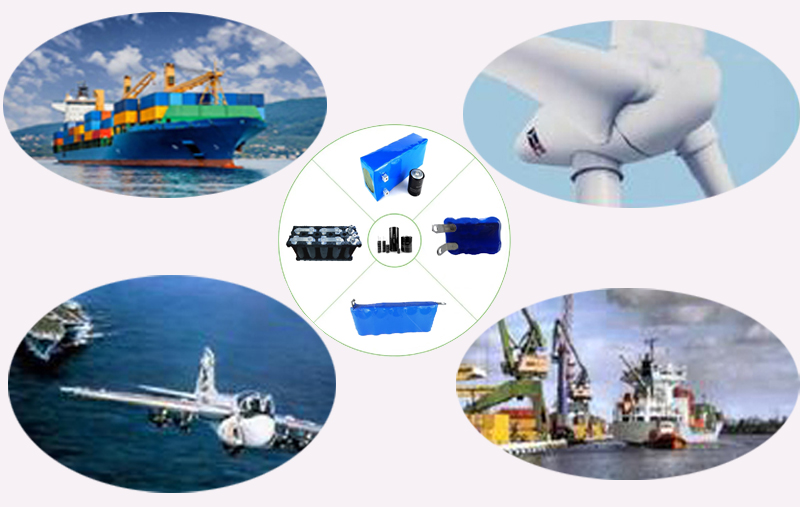Consulting phone:
135-3037-2041
(Mr.Wang)
Product introduction
Farad double-layer capacitor module, also known as double-layer capacitor, gold capacitor and supercapacitor, is a chemical component developed from the 1970s and 1980s. Supercapacitors store energy through polarized electrolytes without chemical reaction, and the process of energy storage is reversible, which is precisely because this supercapacitor can repeatedly charge and discharge hundreds of thousands of times. The difference between farad capacitance and ordinary capacitance is the difference in capacity. The capacity of ordinary capacitor is between 10000 and 40000 microfacies, and the capacity of super capacitor can reach thousands of farads, 1 farad=1 million microfacies, so the super capacitor is also called farad capacitance.
Series specification table:
| project | Specification/condition |
| Rated voltage | 30V DC |
| Surge voltage | 31.5V DC |
| Capacity | 150F |
| working temperature | -40℃~+65℃ |
| tolerance | 0~+30% |
| Product life | Normal temperature cycle life: at 25 ℃, use constant current to make the capacitor |
Cyclically charge and discharge between the specification voltage and the half-rated voltage for 1 million times. Capacity attenuation ≤ 30%, internal resistance change ≤ 3 times | |
| High temperature resistance life | 1000 hours of rated voltage under+65 ℃. 30% capacity attenuation,Internal resistance change ≤ 3 times |
| ESRAC(mΩ/1KHz) | 2 milliohm |
| Working current (a) Δ t=15℃ | 128a |
| Peak current (a) | 2406a |
| Leakage current (72hrs/µ a) | 5.2 |
| Energy (WH) | 3.75W |
Products can be customized: do the following
Spot welding can be conducted in 2 strings of 6V or 3 strings, 4 strings or 6 strings, 8 strings or 10 strings
1. Parallel connection with the battery, starting acceleration, automatic transmission vehicle restraining jerk, all better than the original
2. In case of parallel electric vehicle battery assisted starting
3. Please use a charger with constant current function to fully charge the capacitor
4. Then use it in parallel
5. The discharge current shall be at least 2000 A
6. Very small leakage
7. Start the 3.0-displacement vehicle independently without pressure
8. The capacitor can be used in parallel with the battery for a long time, and the car can be started several times
9. The car will run out of power if you start it with a capacitor alone for 1-2 times
Product application range:
High-current operation: electrified railway, smart grid control, hybrid electric vehicle, wireless transmission, high-power support: wind power generation, locomotive startup, ignition, LED flash lights for electric vehicles, solar power generation, etc

Test method:
1. Electrostatic capacity test method:
(1) Test principle
The electrostatic capacity of supercapacitors is measured by the method of constant current discharge of capacitors, and calculated according to the formula. C=It (U1-U2), where: C-electrostatic capacity, F; I - constant discharge current, A; U1 and U2 adopt voltage, V; Discharge time required for t-U1 to U2, S
(2) Test procedure
Charge the capacitor with a current of 100A, charge the capacitor to the working voltage and keep the voltage constant for 10 seconds, then discharge the capacitor with a current of 100A, take U1 as 1.2VU2 as 1.0V, record the discharge time within the voltage range, and take the average value of the total cycle static capacity.
2. Stored energy test
(1) Test principle:
The energy test of supercapacitors is carried out by discharging the capacitor at constant power to 1/2 working voltage within the given voltage range of the capacitor. The output energy W of capacitor is obtained from the relationship between constant discharge power P and discharge time T, that is, W=P. T
(2) Test procedure
Charge the capacitor to the working voltage with a constant current of 100A, and then, until the charging current drops to the specified current (traction type 10A, starting type 1A). After 5 seconds of standstill, discharge the capacitor to 1/2 of the working voltage with a constant power, record the discharge time and calculate the value. Cycle 3 measurements and take the average value.
3. Equivalent series resistance test (DC)
(1) Test principle
The internal resistance of the capacitor is measured according to the sudden change of voltage within 10 milliseconds after the capacitor is disconnected from the constant current charging circuit. That is, in the formula: R-internal resistance of capacitor; U0 - voltage before the capacitor cuts off the charge; Ui - cut off the voltage within 10 ms after charging; I - Cut off the current before charging.
(2) Measurement process
Charge the capacitor with a constant current of 100A, disconnect the charging circuit at 80% of the charging working voltage, use the sampling machine to record the voltage change value within 10 ms after the capacitor is powered off, and calculate the internal resistance, repeat for 3 times, and take the average value.
4. Leakage current test
After the capacitor is charged to the rated voltage with a constant current of 100A, it is charged at this voltage for 30min at constant voltage, and then left open for 72h. In the first three hours, record the voltage value every minute, and in the remaining time, record the voltage value every ten minutes.
Calculate the self-discharge energy loss, SDLF=1 - (V/VW) 2, and the calculation time points are: 0.5,1,8,24,36,72 h
Note: The voltage tester must have a high input impedance to minimize the playback noise.